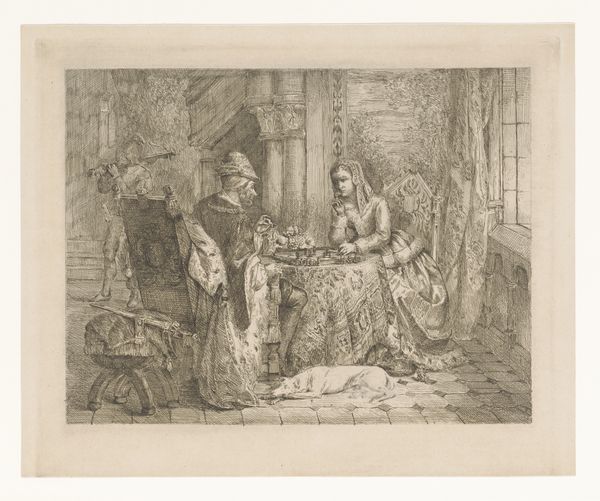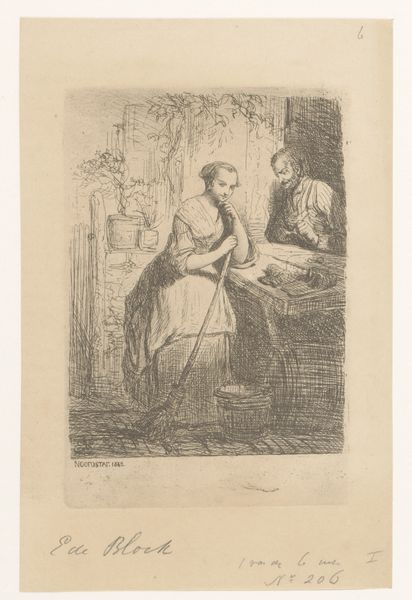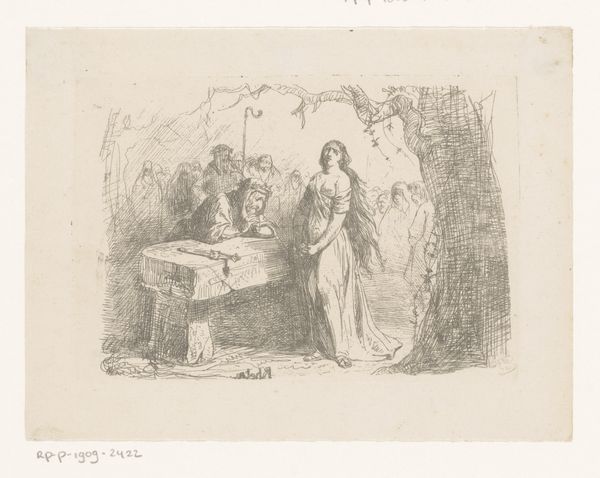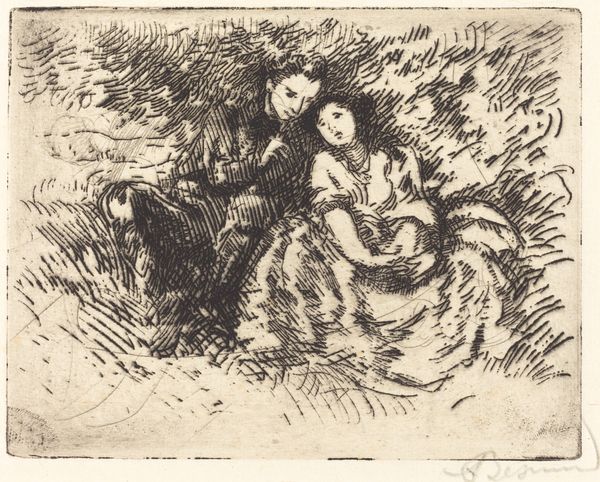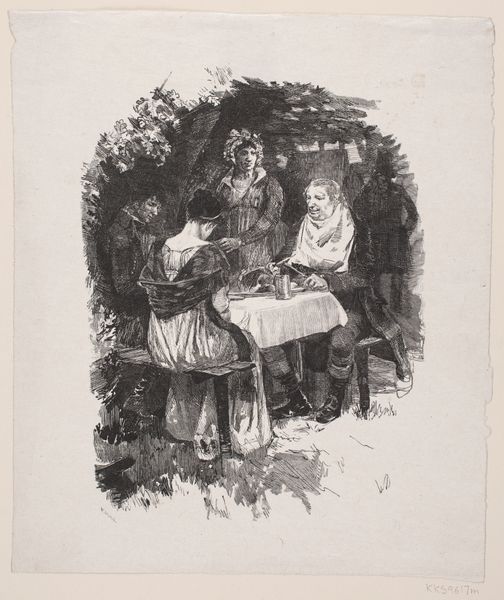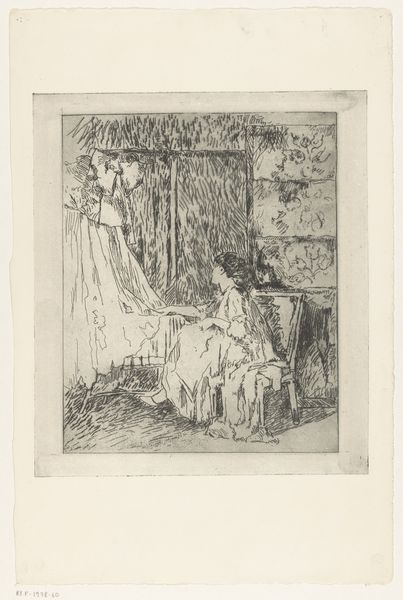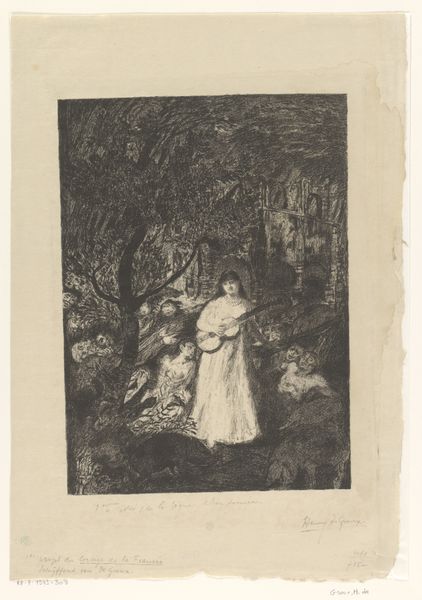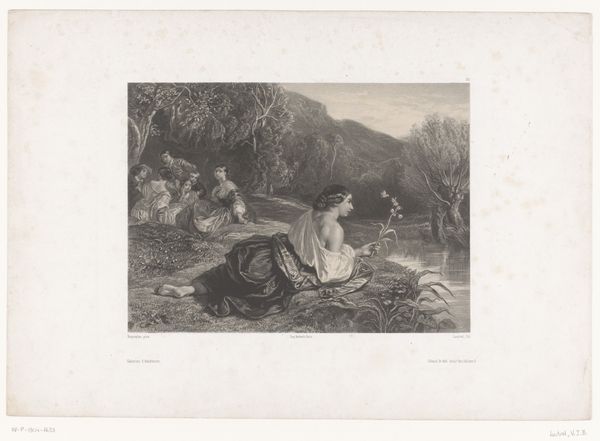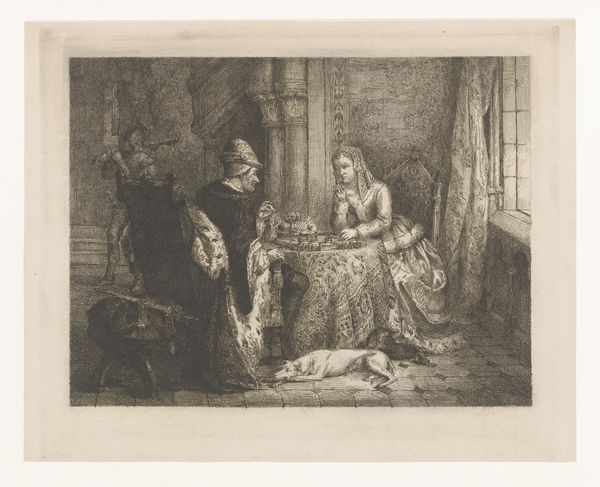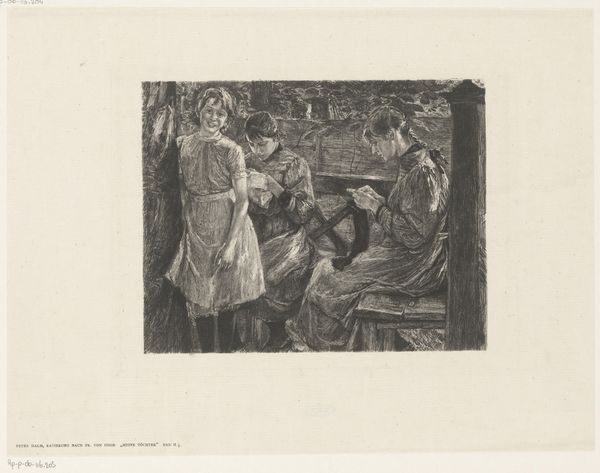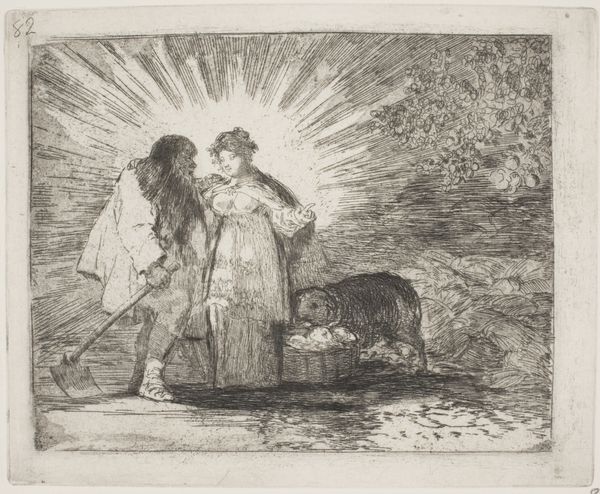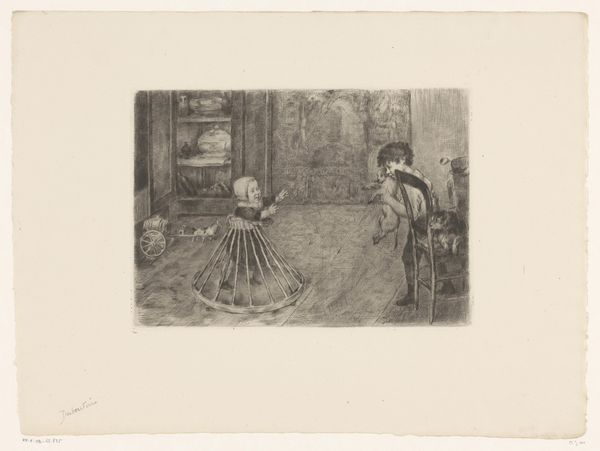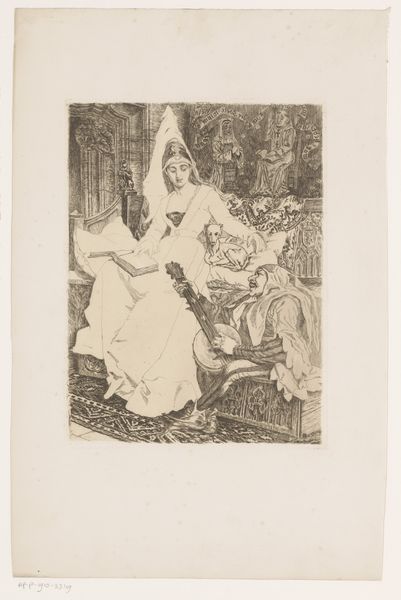
print, engraving
#
portrait
#
pencil drawn
#
toned paper
#
light pencil work
# print
#
pencil sketch
#
old engraving style
#
bird
#
personal sketchbook
#
ink drawing experimentation
#
pen-ink sketch
#
sketchbook drawing
#
pencil work
#
genre-painting
#
engraving
#
realism
Dimensions: height 207 mm, width 268 mm
Copyright: Rijks Museum: Open Domain
Editor: So, this print, "Vrouw komt bij een vleesverkoper in zijn kraam," created sometime between 1866 and 1910 by Louis van Engelen, depicts a woman at a butcher's stall. It’s remarkably detailed, especially considering it's an engraving. I’m struck by the almost staged encounter. What is your take on its significance? Curator: It's tempting to view it through the lens of social realism. These genre scenes were frequently used to either romanticize or critique daily life. How do you think the market stall, presented as a public, commercial space, reflects the socio-economic roles of women in that era? Editor: That’s a good question. Perhaps the woman represents the domestic sphere venturing into the commercial one, but what about the butcher holding what looks like a cigarette? Curator: Exactly! This nonchalant pose juxtaposes the expected diligence of labour with indulgence, offering social commentary. Are we seeing a critique of working-class habits? And look closer—what's hanging behind them? How does that imagery shape our perception of their social environment? Editor: I see, different birds and game animals; a sense of a life sustained by hunting and trade... but also display, maybe? This points to consumption patterns and how individuals like this butcher participated in those circuits. Would these prints have served an educational function, maybe influencing the views of a rising middle class? Curator: Potentially. Genre scenes served didactic functions and reveal evolving notions of class, labor, and gender. They are key to understanding visual culture's role in shaping social attitudes. Editor: This makes the scene far more than just an everyday interaction. Thinking about social messaging encoded in such images gives me a much better appreciation for the visual narratives circulating at that time. Curator: Precisely! It's a lens into the public imagination, the unspoken rules, and simmering tensions. Keep asking, keep looking!
Comments
No comments
Be the first to comment and join the conversation on the ultimate creative platform.
